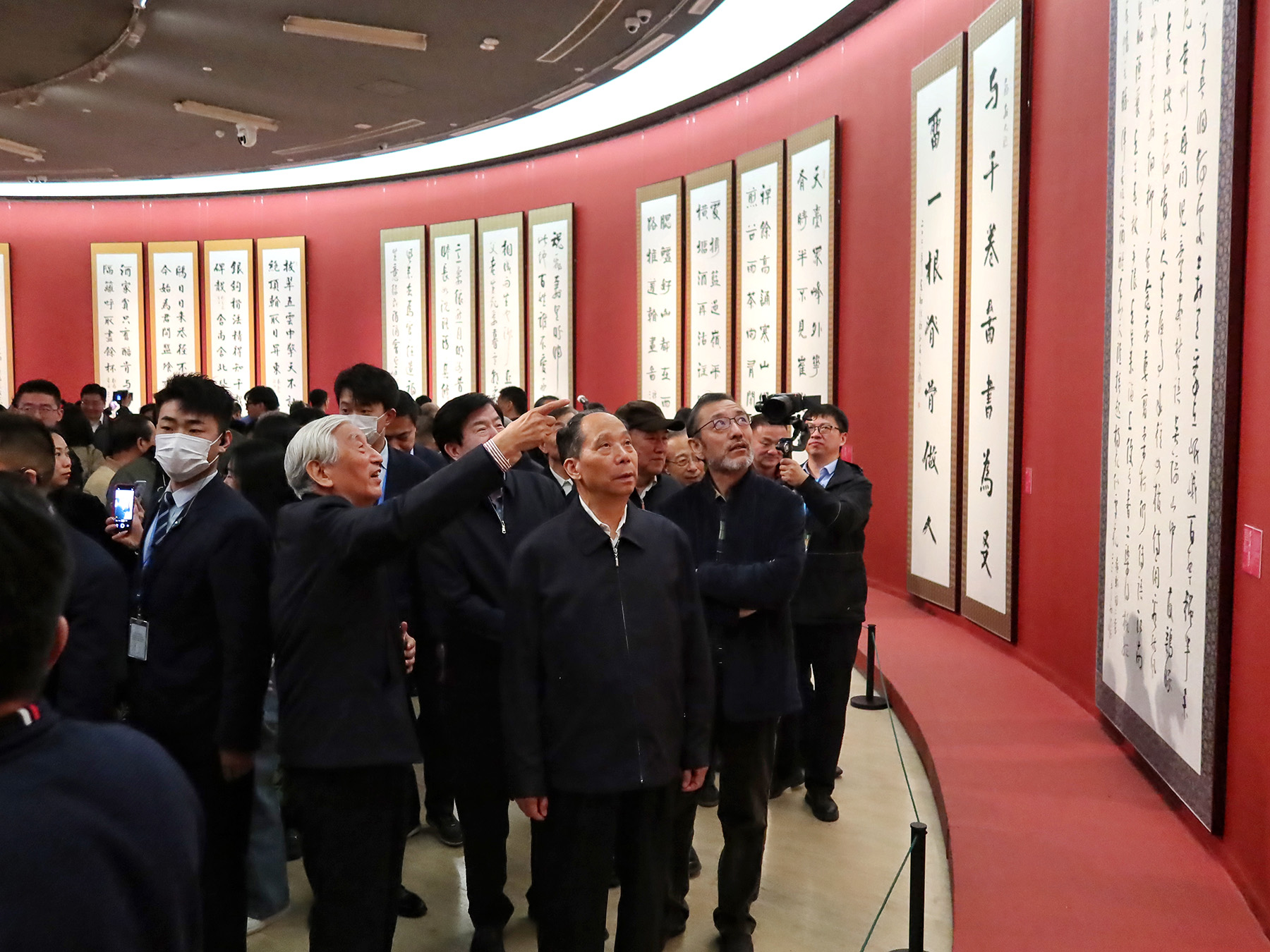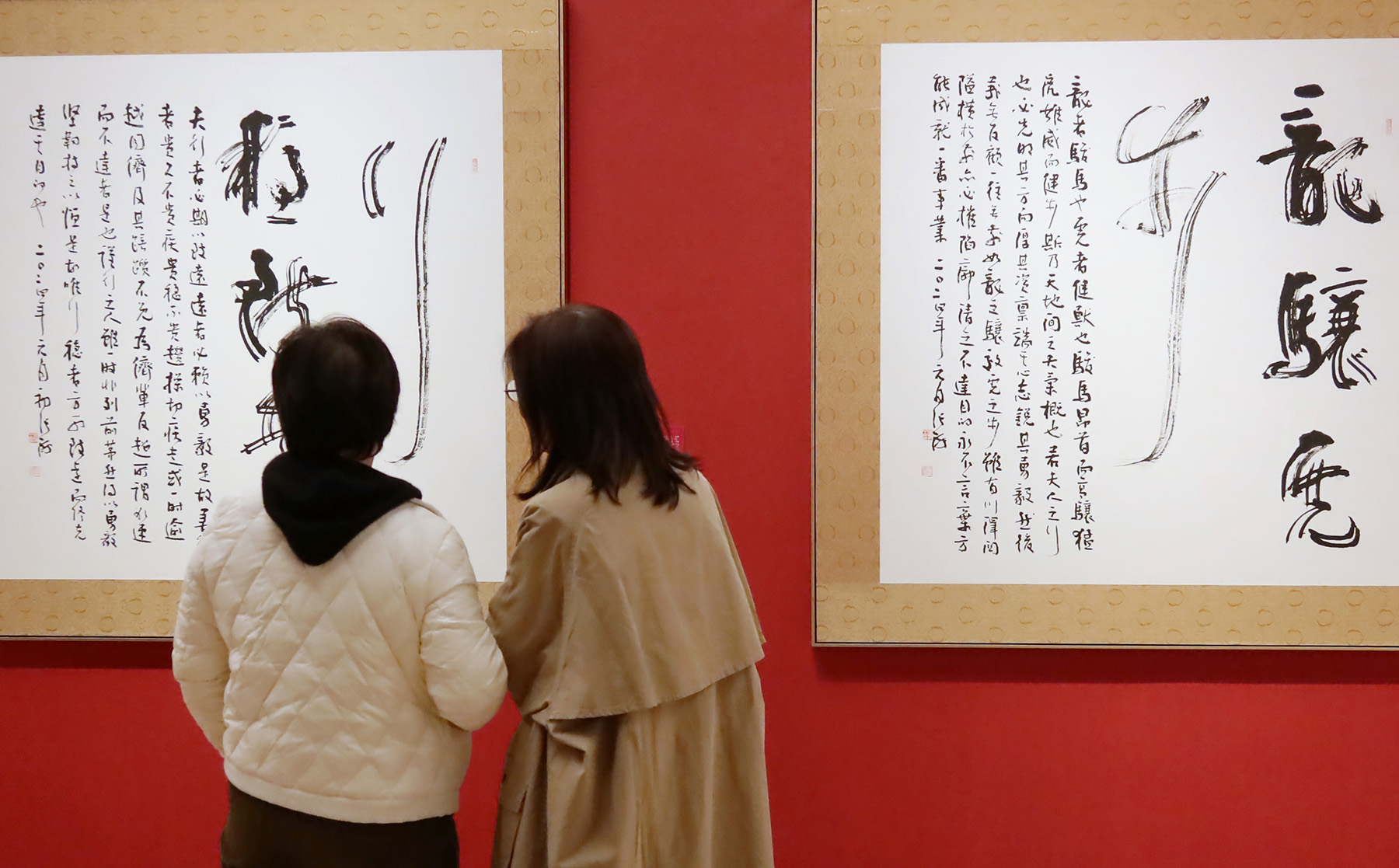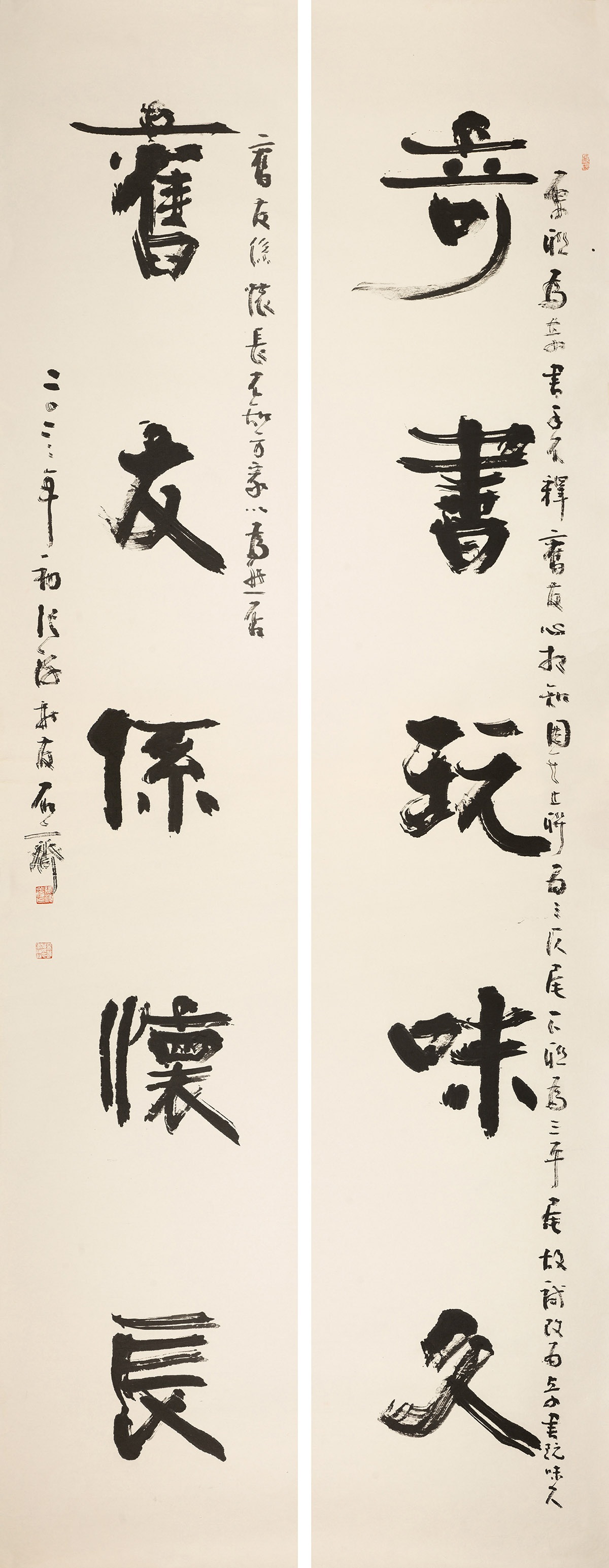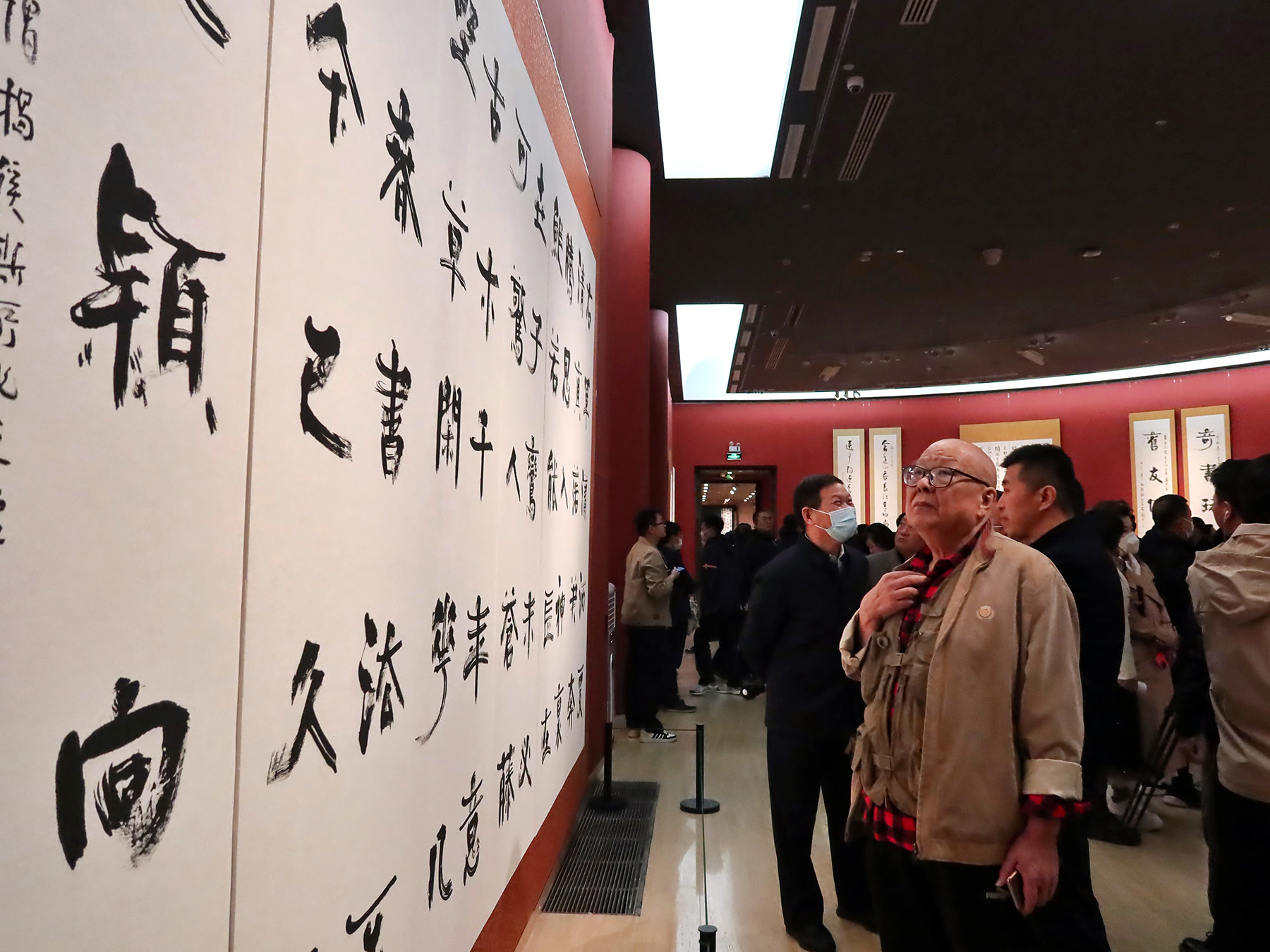An acclaimed 82-year-old calligrapher continues to write new chapters in his field, Lin Qi reports.

Zhang Hai remembers how impressed he was by his primary school teacher's neat writing on the chalkboard.
"I said to myself then that I want to write as well as he does someday."
The 82-year-old fulfilled his childhood dream years later — but using different tools on a different medium.
Zhang is regarded as a leading figure in the creation, research and teaching of calligraphy, and serves as the honorary chairman of the China Calligraphers Association.
He continues to endeavor in this field, seeking further breakthroughs to carry on its cultural lineage.
The work he created after turning 80 is part of his calligraphy exhibition, Moving Steady to Get Far, running at the National Art Museum of China in Beijing through Saturday.

The preliminary stage of calligraphy accompanied the formation of Chinese characters, including those inscribed on animal bones, tortoise shells and bronze ware millennia ago. It gradually evolved into a category of aesthetic values and an independent form of fine art, and developed major styles, including zhuanshu (seal script), lishu (clerical script), kaishu (regular script), xingshu (running script) and caoshu (cursive script).
Like many masterful predecessors of calligraphy in history, Zhang attempts to push forward the frontiers as an important vehicle showing not only the skeletal beauty of characters, but also as a highly individualized form revealing the writer's emotions, as he makes the brush an extension of his body and mind to create chemistry between pen and paper.
Zhang is reputed as being well-versed in the xingcao style, a subdivision of caoshu that blends with the more standard xingshu script. It is in this realm that he invented the pofeng (split-tip) style some 20 years ago, which he has continued perfecting until today.
The innovation came about by chance. When he was working on a piece one day, his brush's soft, flexible tip bifurcated, and every stroke became two lines. He didn't stop but moved on to finish the work, and found the unique, three-dimensional effect created by writing with a split tip quite interesting.

But it was not until his first solo exhibition at the National Art Museum of China, in 2004, that Zhang felt confident in this new brushwork technique.
"The exhibition began with a pofeng piece that many people said impressed them at first sight," he recalls, saying it provided a new perspective on feeling the smooth transition, from one stroke made with controlled force to another with greater ease. "And the core of the work didn't fall apart."
Their feedback encouraged him to fully commit to further developing this new style. Now, returning to the same venue, he is sharing what he has achieved so far.
To enhance the imposing feel of his work — while increasing the technical difficulty — Zhang also incorporates single-stroke script, the innovation of Wang Xianzhi, a fourth-century master calligrapher, which requires the creator to finish the entire text in a single stroke, without breaks or adding more ink.
In 2017, Zhang received the lifetime achievement award at the sixth Lanting Awards, the top accolade presented by the China Calligraphers Association.

Wu Weishan, director of the National Art Museum of China, who is also a calligrapher, says no words can better summarize Zhang's accomplishments than the judges' commentary at the award: "His calligraphy, especially in the cursive script, is of structural simplicity while embodying rich meanings. His work shows the twists and turns a calligrapher takes to ascend the ladder of art and an eruption of creativity with which he hopes to keep the developments of calligraphy in pace with time."
"I often ask myself if I can stand feeling alone," Zhang says. "You can't produce good work if you are not ready for the lonely feeling of the world of art. And do I see breakthroughs? If I make work that is better than my previous pieces, then I do progress a bit."
At the exhibition's opening ceremony, Zhang donated more than 30 of his pieces to the National Art Museum of China.
China Calligraphers Association vice-chairman Li Xin says that Zhang has witnessed and promoted the development of calligraphy over the past four decades. His art is rooted in tradition and nurtured by classical work.
"And he has led a life as colorful as a painting and as storied as a book," Li says.
Contact the writer at linqi@chinadaily.com.cn


